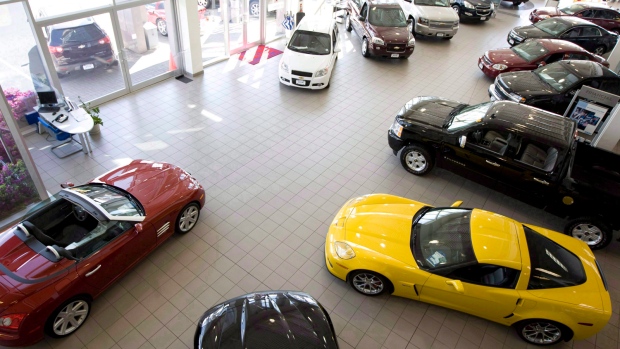A record 4.3 million Americans have vehicle leases that are ending in 2019. If you’re one of them and you expect to get the same kind of deal you got in 2016, you could be in for a shock.
Low-cost leases were abundant in 2016. But since then, the price of vehicles and interest rates have steadily risen, while the residual value of some vehicle segments — notably sedans, which have lost favor with buyers — has dropped. As a result, higher lease payments are in the offing this year.
For example, the average monthly lease payment for a 2016 Toyota Camry SE was $272. Fast forward to today, and factoring in a slight increase in down payments since 2016, the average monthly lease payment for a 2019 Toyota Camry SE is $348.
That’s an overall cost increase of 26 percent, according to transaction data compiled by Edmunds. The total cost difference over a 36-month lease would be about $2,800.
Other popular sedans have a similar story. A 2019 Toyota Corolla LE will cost about 22 percent more than its 2016 cousin. A new 2019 Honda Civic LX can be expected to come in 19 percent higher than its 2016 predecessor.
You could catch a break if you’re now in the market for an SUV, however. The Chevrolet Equinox LT with all-wheel drive (AWD), which was one of the most leased vehicles in 2016, has not had as dramatic a price increase. Early 2019 transaction data suggests the current Equinox will only cost about $200 more over the life of the 36-month loan than it did three years ago.
Other SUVs whose lease costs have not gone up dramatically include the Honda CR-V LX AWD and the Jeep Grand Cherokee Limited AWD.
Generally, though, expect to pay more if you plan on leasing again in 2019. Here are some strategies to keep your transportation costs under control:
EXTEND YOUR LEASE: If you’re happy with your current payment and current vehicle, consider extending your lease. Most leasing companies will be happy to let you continue with your current vehicle for anywhere from a month to a year. This extension can keep you in a comfortable payment longer while you work out a longer-term plan. And it may only take a call to your lender to set up.
SWITCH BRANDS: Some brand-loyal buyers end one lease and start another with exactly the same make and model. But if the new version comes with a hefty increase, consider shopping for a lease from that brand’s competition. Another carmaker might offer you a generous incentive to switch.
CHECK FOR EQUITY: Most leased vehicles don’t have equity, which means they’re worth the same or less than the residual value, or estimated long-term value of a vehicle assigned by the lender, at the start of the lease. But people who leased SUVs could be in luck, thanks to the recent surge in SUV popularity. SUVs are prized in the used market, and that has lifted their residual value. This is especially true for popular brands that traditionally hold their value, such as Honda, Mazda and Toyota.
To see if you might have equity in your leased car, find out its value online and compare that figure with the residual buyout amount. If the vehicle’s current estimated value exceeds the residual amount, you could have money in your pocket. You won’t know for sure, however, until you take the vehicle in for a dealership appraisal.
If you have equity, you can use it as a down payment on your next vehicle to reduce the monthly payment. Or you can pocket the difference.
CONSIDER A LEASE BUYOUT: If you like your current vehicle, you might want to buy it. In most cases, you’ll be able to purchase your vehicle from the leasing bank for your current residual amount, plus any regional taxes and fees. Banks, credits unions and dealerships offer financing for buyouts. And because longer financing terms should be available on a 3-year-old car, it may be possible to stretch your loan to as long as 72 months to keep your payments low.
BUY A CERTIFIED PRE-OWNED CAR: Leasing is attractive because it gets you a new, hassle-free vehicle at typically a lower payment than you’d have with a purchase. If you want to break the leasing cycle and would consider a car that’s not quite new, a certified pre-owned (CPO) vehicle might be an option.
CPO vehicles are in excellent condition and generally get a 100,000-mile powertrain warranty, offsetting most concerns about major repair costs. Since they are used, they have a lower selling price, and lower monthly payments, than a new vehicle.
EDMUNDS SAYS: The leasing landscape has changed dramatically in three years. If your lease is up, and the latest lease prices seem too high, you might need to change your approach to leasing or even consider buying to get a deal that fits your budget.
(AP)











One Response
is this a gimmick from a leasing agency?
and this idea of recommending a 72-month car loan is a form of economic murder.
borrowing (with interest) on a car for such a long period of time is extremely risky even for a new car but for a used car? Forget it! the negative equity that you would have at most points of your loan means that an accident, maintenance issues, or even just the need to upgrade to a larger vehicle will really pinch the pocket